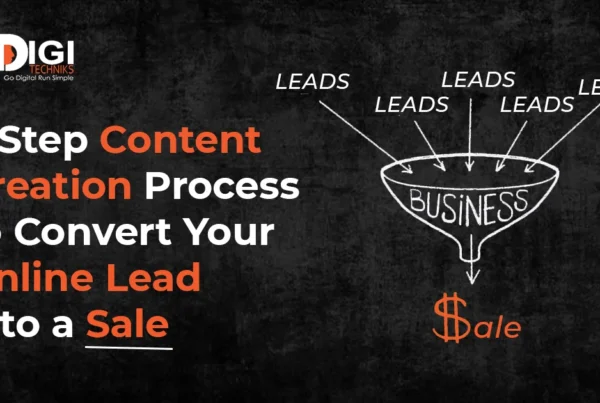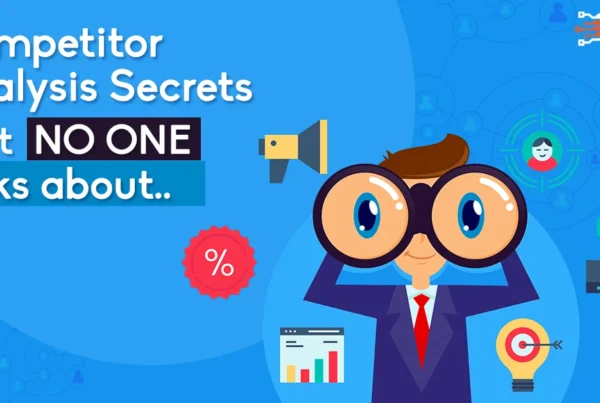
Do you create content that exclusively caters to your target audience? Or, are you casting a wide net with your content and hoping whoever notices becomes your prospect?
If it’s the second one, then you’re flushing your money down the drain. The reason is simple: If you’re not creating content that appeals to the right people — those who are most likely to buy your product/service — no one is going to see them and be persuaded to take the action you want them to take. The result? You spend time, money, and resources on content creation and distribution while getting minimal to zero returns
So why do businesses fail to target the right set of people before pushing their content on social media? That’s because most of them don’t have adequate knowledge of the targeting options that exist on social media.
Related Article- 11 Step Content Creation Strategy To Convert Your Contacts To Contracts
Not Targeting Often Derails Marketing Campaigns
According to a survey, lack of content targeting and relevancy generates response rates that are 83% lower in an average marketing campaign.
This is why a business owner or marketer must do some prep work before launching their business on social media. Here’s a checklist of some key things to do before putting your content on social media:
- Learn about the different targeting options available on social media
Spend some time to understand how to play with different targeting options available on different social media platforms. For example, Facebook allows you to segment the audience based on the actions your visitors take on your web Assets and Create a lookalike of the action takers and also You can target your audience based on their demographics, interests, purchase behaviors, device usage, buying intent, etc. With the help of these targeting options, you can reach a local or global audience like never before.
Related Article– Facebook Ads Strategies that drive 5X Percent Results
- Identify the right audience
Create the ideal profile of your target audience, based on age, gender, demographics, location, interests, educational status, etc. Then narrow it down to those who have the problems that your product/service can solve. These are people who will be interested in your offering and who you need to target.
- Validate your business model
Before you begin the process of marketing on the web and social media, it’s critical to know whether your product/service has an acceptance among your prospects. Our 3-Step Customer Acquisition Funnel Validation method can help you nail this.
Related Article– 3 Step Digital Marketing Strategy for Customer Acquisition Funnel Validation
Now that you have some idea of the things you should do prior to jumpstarting your content creation and distribution process, let see how you can put all of these into practice through an easy-to-follow 5 step formula.
5 Step Targeting Strategy
Step #1 Assume
Begin by identifying your target audience based on social media customer variables. After you’ve created an ideal customer profile, it’s time to design lead magnets and show this lead magnet to your audience on Social Media Platforms.
In case if your audience cannot easily be identified on Social Media, find out the search behavior of your target audience and target them With an irresistible offer on Search Platforms
Step #2 Collect
In this step, you need to collect 100% of the data of action takers — these are people who consumed your lead magnet or irresistible offer or took any form of action in any of your web assets. This data can be collected in the form of cookies or contact info.
Step #3 Segregate
After you have the data of people who have consumed the lead magnet or an irresistible offer and who have engaged on your web assets, you need to create a custom audience to segregate them based on their actions. Data segmentation can be done based on who are visitors, who are leads, who are buyers, and non-buyers.
Step #4 Convince
After segmentation in the previous step, now focus your attention on converted and non-converted groups. Create 3-5 specific content pieces personalized and optimized for non-buyers. Push this content to attract the people who didn’t convert in the last step. These content pieces should be created with the goal to convince non-buyers to become buyers.
Monitor the performance of your content and check the conversion rate. Ideally, at least 6% of your target audience must convert into paying customers. Lower than 6% conversions mean that you need to tweak either your target audience or customer acquisition funnel and repeat the process.
Related Article– 6 Steps Customer Acquisition Formula
Step #5 Scale
Now that you know what your ideal convertible audience looks like, you have reached a stage where you can scale your content marketing efforts. On Social Media ad Platforms, this can be done by creating lookalikes. Through this, you can target all the people who look like your ideal convertible audience.
You can create lookalike audiences from custom audiences on Social Media ad Platforms, which then, will recognize the key similarities between your ideal audiences and find people similar to them to target in new campaigns.
Additional tip
In social media marketing, the opportunity lies in reaching your ideal buyers, but your fortune is in retargeting. Therefore, have a retargeting strategy where you can reach at least 80% of the audience you have identified in the ‘Assume’ step using email marketing or social media retargeting platforms.
Related Article– 6 Simple social media hacks to convert contacts to contracts
A strong targeted content strategy is a must for you if you’re looking to win a long-term game in social media and branding efforts. These five steps will ensure that you’re putting your money where you have the highest chances of getting good returns. The advantage of this targeting strategy is not limited to just creating targeted content. You can apply the data and customer profile from this exercise to other marketing tactics, from email marketing to PPC advertising.
Do you want to get a personalised 1-to-1 discovery session?
Book your 1-to-1 discovery call with us today!



